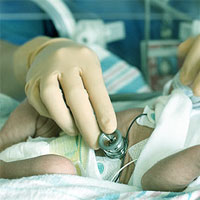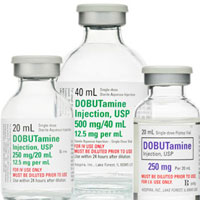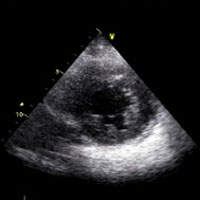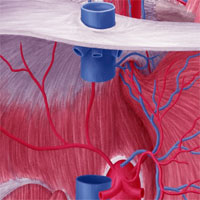Tag: study

Medication Errors Occur in Nearly Half of ICU Transfers
Almost 50% of patients transferred from the intensive care unit (ICU) to a non-ICU location experience a medication error at the time of transition of care, according to new data. While the majority of these errors did, in... read more

Tomorrow’s ICU
Johns Hopkins clinicians and engineers are creating a model for a safer, less costly and more productive clinical unit that can be adopted anywhere. With clinicians spending less time on documenting and gathering supplies,... read more

Resetting the Circadian Clock Might Boost Metabolic Health
This Medical News feature discusses the role of circadian clock in regulating metabolism. Over the past 20 years, scientists have assembled a clearer picture of the circadian clocks that keep human physiology tuned to the... read more

Five-Year Survival and Causes of Death in Children After Intensive Care
There was an increased risk of death in a cohort of ICU-admitted children even 3 years after discharge. In those who survived 30 days after discharge, medical causes of death were dominant, whereas deaths due to trauma were... read more

Prevention of Low Cardiac Output Syndrome After Pediatric Cardiac Surgery
Dobutamine and milrinone are safe, well tolerated, and equally effective in prevention of low cardiac output syndrome after pediatric cardiac surgery. The hemodynamic response of the two drugs is comparable. In uncomplicated... read more

Septic Cardiomyopathy
Septic cardiomyopathy is an important contributor to organ dysfunction in sepsis. Guided treatment of septic cardiomyopathy may affect patients' prognosis, especially when their cardiac index is substantially decreased. The... read more

Apneic Oxygenation in the ICU
Hypoxemia is the most common complication of endotracheal intubation in the critically ill and the strongest risk factor for periprocedural cardiac arrest and death. The traditional approach to avoiding desaturation during... read more

The Efficacy and Safety of Pre-hospital Cooling After Out-of-Hospital Cardiac Arrest
Mild therapeutic hypothermia (TH), or targeted temperature management, improves survival and neurological outcomes in patients after out-of-hospital cardiac arrest (OHCA). International guidelines strongly support initiating... read more

Isolated Left Ventricular Failure is a Predictor of Poor Outcome in Patients Receiving Veno-Arterial ECMO
Veno-arterial extracorporeal membrane oxygenation (va-ECMO) is increasingly and successfully used to assist patients with refractory cardiogenic shock from different causes. A total of 132 va-ECMO patients were enrolled.... read more

Experience and Needs of Family Members of Patients Treated with ECMO
Sudden onset of an unexpected and severe illness is associated with an increased stress experience of family members. Only one study to date has explored the experience of family members of patients who are at high risk of... read more

Associations With Psychological Outcomes Among Family Members of Mechanical Ventilation Survivors
In this multicenter cross-sectional survey, we interviewed family members of mechanically ventilated patients at the time of transfer from the ICU to the hospital ward. To our knowledge, this is the first study to explore... read more

Does Respiratory Variation Of Inferior Vena Cava Diameter Predict Fluid Responsiveness In Spontaneously Ventilating Children With Sepsis
IVC collapsibility has poor test characteristics for predicting fluid responsiveness in spontaneously ventilating children with sepsis. Thirty-nine fluid boluses were recorded in 33 children, 28/39 (72%) of which met criteria... read more

The Right Tool for the Right Patient
Resuscitative TEE in the diagnosis of massive PE in the ED. We have multiple tools in the ed that allow us to assess patients rapidly. But of course, you must use the right tool for the patient. transthoracic echo (TTE) can... read more

Temporal Trends in Incidence, Sepsis-Related Mortality, and Hospital-Based Acute Care After Sepsis
Owing to increasing incidence and declining mortality, the number of sepsis survivors at risk for hospital readmission rose significantly between 2010 and 2015. The 30-day hospital readmission rates for sepsis declined modestly... read more




